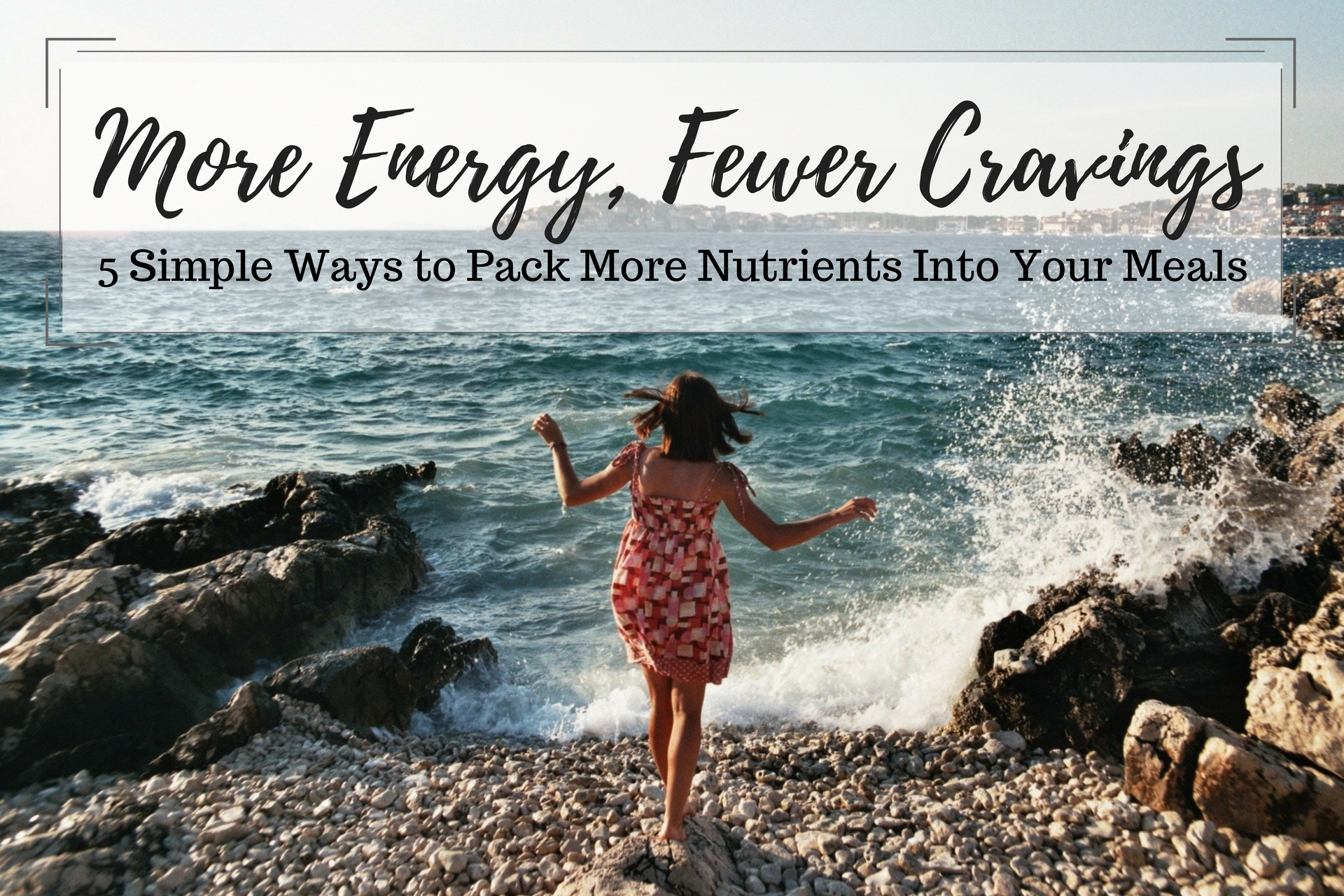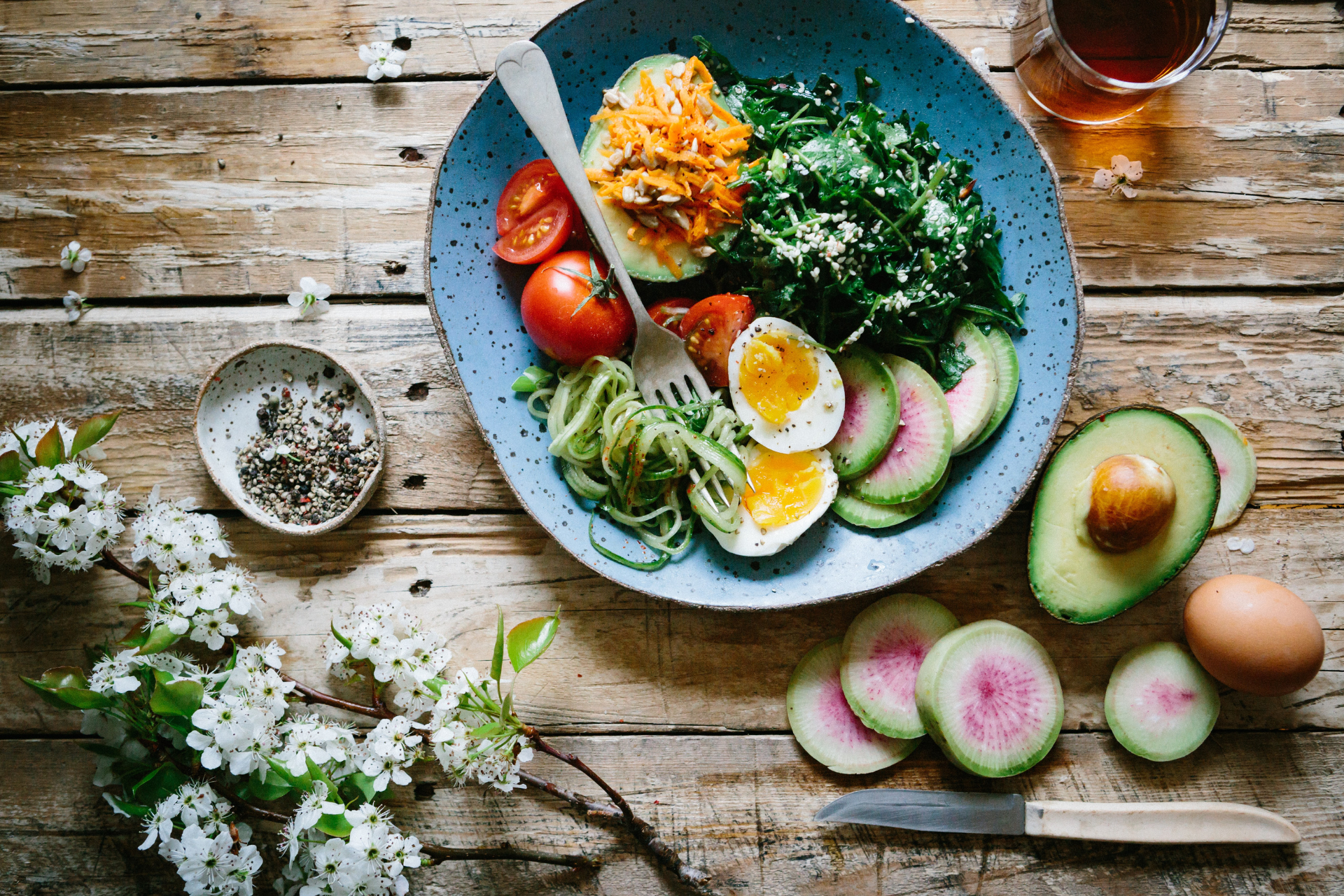Want to lose weight without eating less?
Want to have more energy throughout the day – without caffeine?
Including certain foods in your diet can actually reduce sugar cravings and help you feel better.
The key to sustainable weight loss, maintaining your energy levels throughout the day, and kicking sugar cravings is to supply your body with lots of nutrient-dense foods.
Why is nutrient density so important?
In order to meet your body’s energy requirements, we consume three main types of “macros,” or macronutrients: carbohydrates, proteins, and fats. These food provide calories, which are units of energy needed to perform day to day functions, as well as build and repair tissues, produce hormones and enzymes, and a number of other essential processes that allow our body to operate at an optimal level.
Carbohydrates (e.g. grains, fruits, vegetables) are our body’s main energy source, but in order to metabolize these and other macronutrients our body uses micronutrients, including vitamins B and K and minerals such as iron, iodine, and zinc. Simple carbohydrates and foods high in refined sugars, such as baked goods and pre-packaged items, as well as highly processed foods, do not contain those vitamins and minerals in naturally occurring forms. Without the necessary macro and micronutrients, your energy levels plummet because your cells aren’t able to produce enough energy to effectively fuel your body. As a result, we feel sluggish, we get hungrier more quickly because our body is lacking the nutrients it needs, and we put ourselves as risk for a number of negative effects on our health, including digestive discomfort, high blood pressure, and increased risk of heart attack or stroke.
Which foods are the most nutrient dense?
It’s probably no surprise that vegetables, particularly green vegetables, are the most nutrient-dense. When you visit the produce section of Whole Foods or another health food store, you’ll notice signs that say “ANDI Score” with a number associated with each food. ANDI stands for “Aggregate Nutrient Density Index” and ranks a food’s nutrient density on a scale from 1 to 1000, thereby serving as an indication of the nutrient to calorie ratio in our food. Kale and collard greens rank at the top of the list with a score of 1000, while soda trails at the bottom of the list with a 1. In general, vegetables have a higher ANDI score than fruits, followed by beans, nuts, seeds, and herbs.
The TOP TEN ANDI SCORES, provided by Whole Foods, are:
1. Mustard/Turnip/Collard Greens (1000)
2. Kale (1000)
3. Swiss Chard (1000)
4. Upland/Watercress (1000)
5. Bok Choy/Baby Bok Choy (1000)
6. Chinese/Napa Cabbage (714)
7. Spinach (707)
8. Arugula (604)
9. Green Leaf Lettuce (585)
10. Basil (518)
(For a complete list, click here)
In general, vegetables contain a higher concentration of micronutrients, while fruits contain a higher concentration of macronutrients, particularly simple carbohydrates such as fructose. While you need some simple sugars in your diet, the higher sugar content of fruits often indicates a higher calorie count. If you’re trying to lose weight or are closely monitoring your caloric intake, include more vegetables in your diet.
So, how do you pack more nutrients into your meals (and still have them taste good), so you can have more energy and fewer cravings?
Here are 5 simple ways:
1. Replace breads and tortillas with lettuce, spinach, or cabbage wraps.
Try your favorite chicken, egg, or tuna salad wrapped in a large Romaine lettuce or cabbage leaf. Or serve it over a bed of spinach and arugula instead of in between two slices of bread. Here are a few recipes to try:
- Clean Eating Tuna Salad
- Clean Eating Chicken Salad
- Curried Chicken Salad
- PF Chang Inspired Lettuce Wraps
- Lime Shrimp Lettuce Wraps
2. Replace pasta with spaghetti squash noodles or spiralized veggies (e.g. zucchini).
- Bikini Bolognese with Zoodles
- Spaghetti Squash Chow Mein
- Spaghetti Squash Enchilada Bowls
- Garlic Shrimp with Cilantro Spaghetti Squash
- Cheesy Zucchini Pasta Quinoa Bake
3. Add a handful of greens to your favorite smoothie.
- Thin Mint Shakeology – Mix 1 scoop Chocolate Shakeology (or your favorite protein powder) with 1.5 cups water, ½ frozen banana, ½ tsp. vanilla extract, a few drops of peppermint extract, a handful of greens (I prefer baby spinach), and ice. Blend and serve.
- Green Smoothies (click here for 9 delicious recipes)
4. Sprinkle sesame seeds, sunflower seeds, or pumpkin seeds on top of your favorite salad; add a tablespoon of chopped pecans/peanuts to your yogurt; or include a Tablespoon of ground flaxseed in your oatmeal, in homemade baked goods, etc.
- Flax Carrots Apple Muffins (Kid-friendly) (Can substitute Sucanat, date sugar, or coconut sugar for brown sugar in a 1:1 ratio)
- Flaxseed and Blueberry Oatmeal
- Click HERE for additional kid-friendly meal ideas
5. Make vegetables the main focus of your meal. Check out these recipes for some inspiration:
- Turkey Stuffed Peppers
- Sausage and Apple Stuffed Acorn Squash
- Acorn Squash Stuffed with Quinoa (vegetarian)
- Sausage Stuffed Zucchini Boats
- Quinoa and Black Bean Stuffed Zucchini Boats (vegetarian)
- Hearty Minestrone Soup
For Salads and Sides recipes to go with your main dish, visit my Recipes page on my blog!
Each of the suggestions above will reduce the total number of calories in your meal while increasing nutrient density. Since vegetables have a lower glycemic index than breads, tortillas, and pasta, they also help keep your blood sugar and energy levels stable, reduce your cravings for sugary foods, and keep you full between meals so you’re less likely to snack. (If you do feel temped to a snack, try one of these from my Healthy Snack Recipes list!) Eating whole foods in as close to their natural state as possible and avoiding pre-packaged and processed foods will also help you maintain a healthy weight, decrease your risk of disease, and improve your overall health.
The Bottom Line: You can meet your body’s nutrient requirements, have the energy you desire, and have fewer cravings by eating REAL FOOD and focusing on NUTRIENT-DENSE FOODS.
CALL TO ACTION: Share a healthy recipe that includes one of the TOP TEN NUTRIENT DENSE FOODS from the list above. Include any modifications that you make to the recipe and a picture if possible so I can add it to Recipes section of my blog!
Other Resources:
For more information on the health benefits of nutrient dense vegetables, visit MyPlate.gov.
For additional suggestions for ways to incorporate more veggies into your diet, visit this article.






One thought on “More Energy, Fewer Cravings – 5 Simple Ways to Pack More Nutrients Into Your Meals”